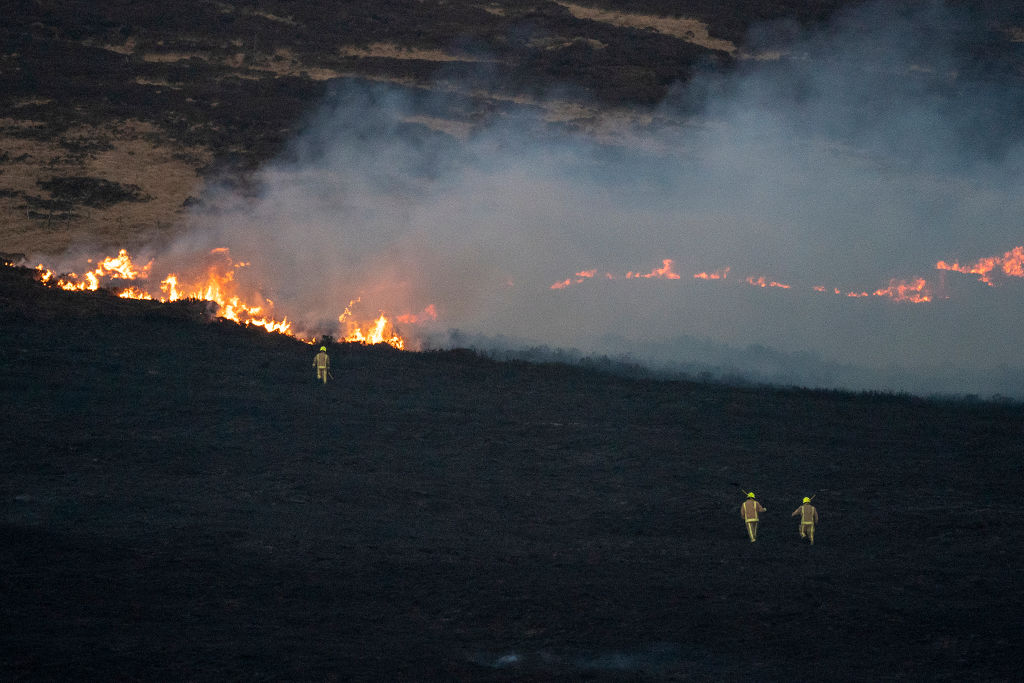In the age of global warming, the idea that setting fire to things can be good for the environment seems counterintuitive. But a new report reveals that the practice of heather burning in the uplands could help protect one of England’s largest carbon stores.
Heather burning is one of the traditional means by which keepers ‘manage’ heather moorlands. By burning off old, woody heather in planned ‘cool burns’ (small, carefully controlled burns that pass quickly over the ground surface) young shoots are encouraged, and the peat below is undamaged.
The review of the science behind heather burning, carried out by the Game & Wildlife Conservation Trust (GWCT), comes in the wake of Natural England banning the practice of rotational burning on deep peat. The trust is concerned that such simple ‘no-burn’ policies will have unintended consequences. They point to the results of similarly well-intentioned regulation in the US. There, regulation stopped managed burning from the 1930s resulting in declines of bird life and the devastating wildfires experienced in recent years.
Wildfires might sound like something more likely to occur in the warmer climes of Australia or Spain, but drier summers such as the one we are experiencing now have led to a stark rise in the number of wildfires in England. These uncontrolled blazes can burn into the underlying peat, which are vital in terms of carbon storage, and takes hundreds of years to form. When the peat catches fire, it releases huge amounts of CO2 into the atmosphere from these carbon stores.
It’s only June, and there have already been serious fires at Hatfield Moors in South Yorkshire, Rakes Moss in Derbyshire and Saddleworth Moor in the Peak District, many of which have burned for days on end.
Recent calls for a ban on portable barbecues – a common cause of such blazes – may go some way to reduce the risk. But this will do nothing to prevent the ferocity of a burn once one breaks out. The intensity of a summer wildfire is largely the result of the amount of dry vegetation sitting on top of the peat. Controlled, ‘cool burns’ carried out by gamekeepers during the winter help reduce this ‘fuel load’. Vegetation-free paths created through the heather by managed burning also provide fire breaks, which stop fire in its tracks.
A collection of case studies published by the GWCT provide the perspective of the people on the ground. George Winn-Darley manages the Spaunton Estate on the North York Moors and works with the local fire services and neighbouring estates to coordinate responses to wildfire. He said, ‘The penny has dropped for the fire brigades who are now saying to the government, if you stop gamekeepers burning you need to massively up our budget.’
As well as increasing the risk of wildfire, stopping this practice could have an impact on the wildlife of the moors. England’s uplands support globally declining birds which thrive on grouse moors partly because controlled burning provides a range of suitable habitats within close proximity.
The GWCT report also finds a lack of evidence to justify the current restrictions on the basis of greenhouse gas emissions and carbon budgets, and calls for more research into heather burning. It also highlights a bigger issue: that too often, conservation policy fails to consider things in the round. The science supports a more nuanced approach where estates are helped to develop individual management plans which can aid peatland restoration, promote wader conservation and diverse flora, as well as supporting the red grouse that underpin the economic and cultural sustainability of remote rural communities.
To reach for the red tape is the easy option and will stifle the efforts of the people making a real difference. As land manager James Mawle says: ‘Why hamstring us by denying us the right tools to get the job done?’. Defra is soon to launch its ‘Peatland Strategy’ consultation. If the resulting policy is to reverse the decline of wildlife, restore blanket bogs and prevent devastating wildfires, it must follow the science and listen to the people on the ground.
Richard Benyon is a former environment minister






Comments